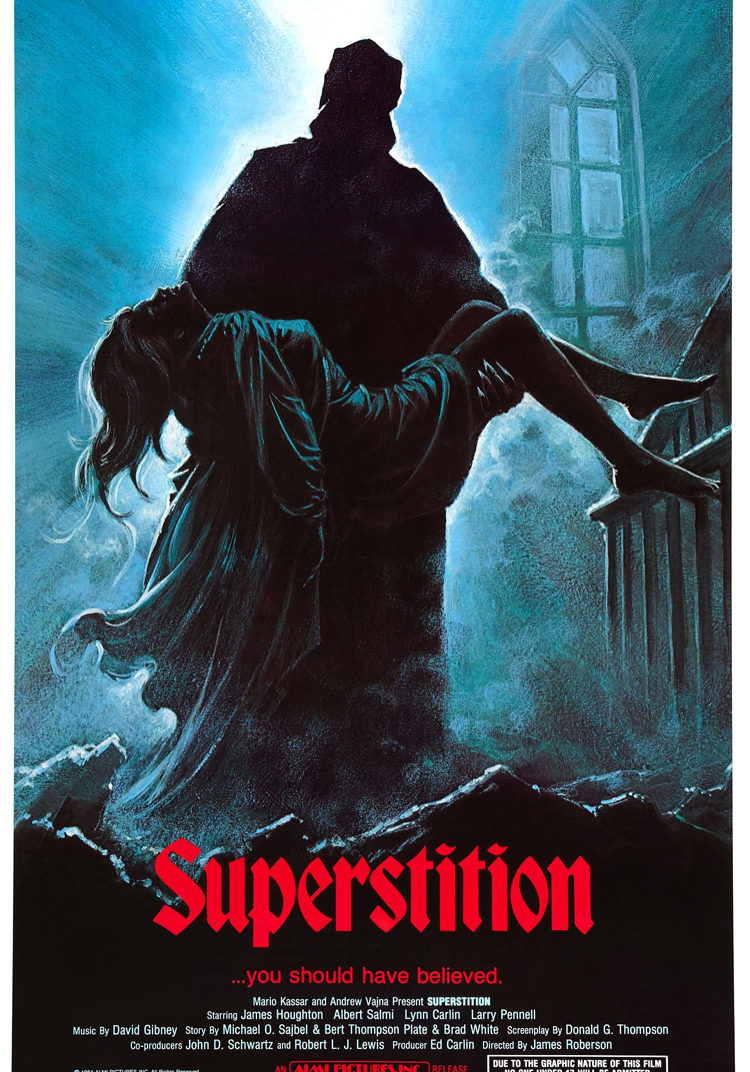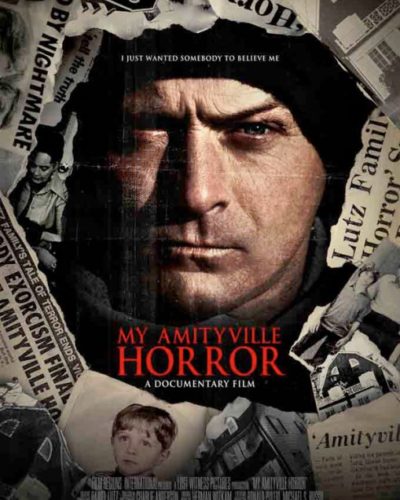The Echoes of Old Wives’ Tales: A Dive into ‘Superstition’
“There are things that have no business being disturbed,” whispers a warning from the dark corners of the 1984 horror movie Superstition. Directed by James W. Roberson, the film endeavors to carve its initials into the weathered wood of the supernatural horror subgenre. Without divulging too much for potential viewers, Superstition presents a grim tableau—a picturesque, derelict house with a history drenched in blood and witchcraft, a new family unsuspecting of the curse that dwells within, and an escalating series of eerie occurrences that beckon to be unraveled.
Shadows and Whispers: Crafting the Mood
The true essence of the film’s horror is found in its atmosphere and tone. Roberson’s Superstition leans heavily on a foreboding ambience to hook the viewer. The manner in which the film instills dread is not through a relentless barrage of shocks, but rather through a growing undercurrent of suspense. It’s the slow-boil approach—the creaking of the floorboards, the chilling breeze through a broken window—that primes the audience for terror.
As for setting the stage, the director’s toolkit seems brimming with ways to tighten the screws of tension. The build-up to the scares is patiently orchestrated, allowing the fear to simmer, with the eerie quietude of the house itself playing a crucial role. To some extent, it’s the art of restraint that the filmmaker appears to relish; tension is what fills the sails of this haunted ship.
The Devil’s in the Details: Cinematic Craftsmanship
Delving into the technical merits, Superstition flashes moments of visual prowess amid the throngs of more typical horror fare. The lighting casts deep, dramatic shadows that give a tangible texture to fear, while the use of color serves to underscore the film’s moody aesthetic. Camera angles often take on an almost voyeuristic feel, adding to the sense of intrusion into this cursed space.
Unsettling special effects and practical makeup work provide an additional layer of visceral grimness. While at times betraying the limitations of a modest budget, these moments strive to compensate for any shortcomings with creativity and sheer boldness.
The auditory experience in Superstition is a symphony of whispers and screams, with sound effects that heighten the sensory experience. The soundtrack, with its haunting melodies, encapsulates the gothic undertones of the storyline, accentuating the bleakness and despair orbiting this house. Silence is used judiciously, oftentimes adding a breathless quality to the anticipation of frights.
Screams from Within: Casting Shadows
When it comes to performances, Superstition offers a mixed cauldron. Characters steeped in archetypal roles render an expected array of emotional responses to terrifying events. Some in the ensemble cast exude a genuine connection to their dire surroundings. Others, however, fall victim to the occasional stiffness that can plague lower-budget horror flicks. Yet, even within these confines, the cast contributes to the dread-infused atmosphere that defines the film.
Focusing on horror elements, the film nestles snugly within the arms of the supernatural subgenre. It plays into this field with tropes familiar to aficionados—curses, vengeful spirits, and dreadful revelations all twine together to form its narrative fabric. Superstition does little to upend genre conventions, but it embraces them heartily, weaving its tale around tried and true mechanics of supernatural terror.
The methods employed to alarm viewers swing predominantly towards sudden jolts intertwined with psychological strings designed to pull tight. Gore takes a backseat here, with the film preferring implication over explicit depiction. Nonetheless, this blend is wielded with passable proficiency, managing to elicit the occasional leap from an unsuspecting viewer.
Beneath the Veil: Parsing the Darkness
Themes of religious intolerance and the dangers of blindly adhering to superstitions lie beneath the surface screams. While not a diatribe nor particularly sophisticated in execution, the film uses its horror veneer to brush against these more profound concepts, albeit lightly. It’s this undercurrent that grants Superstition some substance beyond its spectral scares.
In assessing the film’s efficacy as a piece of horror cinema, Superstition stands neither as a landmark of fright nor a forgettable stumble in the dark. It occupies the space of an earnest attempt at conjuring scares, one perhaps most appreciated by those with a penchant for 80s horror nostalgia or students of the supernatural narrative.
Fans of atmospheric horror that doesn’t rely heavily on modern special effects or fast-paced frights may find a cozy, cobwebbed corner in Superstition. Conversely, those used to high-budget polish or relentless terror may find the film quaint, a curiosity rather than a cornerstone of their horror collections.
As a footnote, it should be mentioned that while not among the goriest of its time, Superstition can still shock with moments of intensity that may unsettle the faint of heart.
In summary, Superstition delivers a ghostly tale steeped in the mores of its era. It offers enough shudders to warrant a view, especially for those entranced by the haunting echoes of old school horror. Its strengths lie in atmosphere and mood, its weaknesses in sometimes rigid dialogue and execution. Our final spell cast upon this picture? A cautious recommendation for those entranced by echoes of horror’s past, seeking to be ensnared by the superstitions of yore.




